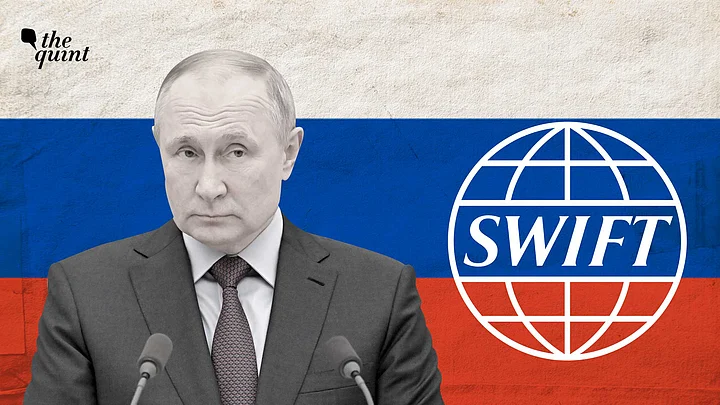The West has cut off a number of Russian banks from SWIFT – the most popular interbank messaging mechanism in the world – in response to Russia's invasion of Ukraine.
Founded in 1973, SWIFT (Society for Worldwide Interbank Financial Telecommunication) is a Belgium-based cooperative of banks that provides the means to communicate rapidly, securely, and inexpensively.
The Clearing House Interbank Payments System, or CHIPS, is a US-based group of 43 financial institutions in 19 countries which settle payments often with the help of SWIFT.
Russian banks can still settle cross-border payments using other ways to communicate, including encrypted telegrams and even email. But these methods are inefficient and costly.
In such a scenario, alternative payments and communications systems have the opportunity to step up, especially China's Cross-Border Interbank Payment System or CIPS.
What's CIPS?
China's central bank launched CIPS in 2015 as part of its efforts to increase the use of yuan for global transactions, reducing the country's reliance on US dollars.
It's important to note that CIPS, like CHIPS, is a payments settlement system, while SWIFT just handles payment-related communications.
In fact, even though CIPS has the capability to run its own messaging network, it has mainly been using SWIFT as its communication channel, according to Reuters.
According to CIPS, about 1,280 financial institutions in 103 countries and regions are connected to the system, the agency said, including 30 banks in Japan, 23 banks in Russia, and 31 banks from African nations receiving yuan under China's Belt and Road Initiative.
How Does CIPS Stack Up Against SWIFT?
Compared to the scope of SWIFT, which has 11,000 members, CIPS is tiny.
SWIFT says it transfers 50 million messages a day, facilitating trade of $5 trillion every day, which dwarfs the 15,000 messages handled daily by CIPS.
Even though it has managed to attract nearly 1,205 indirect participants internationally, CIPS only has 75 direct participants (mostly overseas subsidiaries or branches of Chinese banks), according to SCMP.
The catch is, only direct participants can transfer information through CIPS, while indirect participants usually send information to the direct participants through SWIFT.
CIPS supports cross-border payment and settlement in the yuan and the Hong Kong dollar. However, the yuan's share of global payment, at 3.2 percent in value, is still leagues behind that of the US dollar, which is at 40 percent, according to SWIFT data.
SPFS: Russia Has Its Own System
After the invasion of Crimea in 2014 and the subsequent sanctions, the Central Bank of Russia launched its own messaging system called the System for Transfer of Financial Messages, or SPFS.
It reportedly has around 400 registered financial institutions, mostly domestic. Only about a dozen foreign banks from countries such as China, Cuba, Belarus, Tajikistan, and Kazakhstan use the system, according to South China Morning Post.
It also has other limitations: SPFS doesn't work 24 hours a day, but only during work hours. It is more expensive and time-consuming than SWIFT and the size of messages is also limited.
Following the SWIFT sanction, Chinese media suggested that CIPS could work with SPFS to counter the restrictions, despite the fact that CIPS currently has a joint venture with SWIFT.
Chinese researchers were quoted by Xinhua and the Communist Youth League Central Committee’s website as saying that the two systems would grow together and become important global interbank payment systems.
But there's a long way to go before the Yuan Renminbi can challenge the US Dollar and make CIPS a comparable alternative to the SWIFT-CHIPS duo.
(With inputs from South China Morning Post and Reuters.)
(At The Quint, we question everything. Play an active role in shaping our journalism by becoming a member today.)
